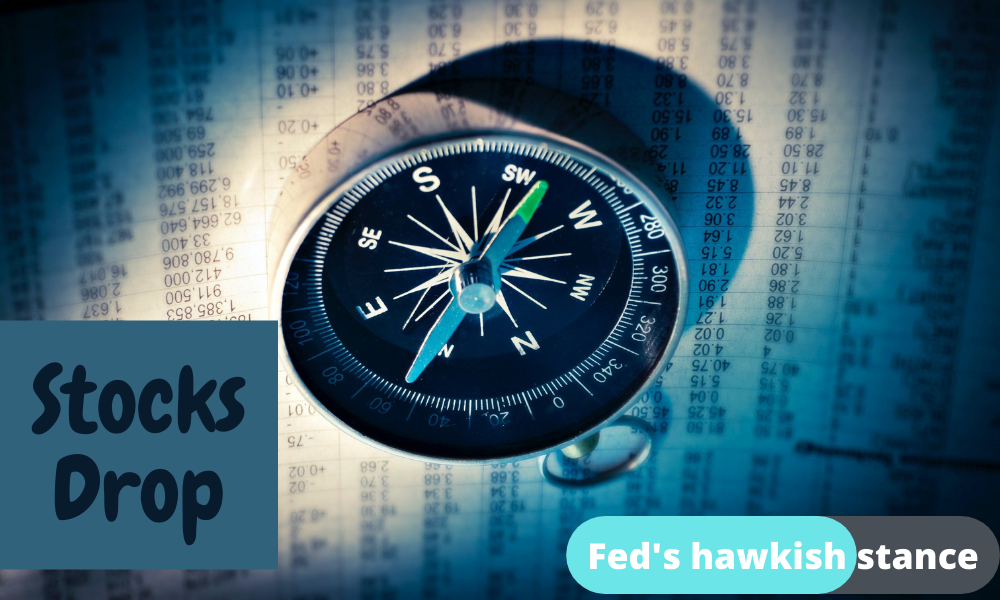
Stocks slumped on Thursday, and short-term government bond rates in the United States soared to their highest level in nearly two years, as the Federal Reserve adhered to its plans for an interest rate hike in March and more policy tightening to combat high inflation.
The Euro STOXX was down 0.5 percent in early trading, while Germany's DAX was down 1.21 percent.
Wall Street stocks fell on Wednesday and appeared to be on track to open lower on Thursday, but futures markets showed they were off the day's lows by 0930 GMT.
In Asia, stock prices fell to their lowest level in nearly 15 months.
The Fed said in its most recent policy statement on Wednesday that it expects to raise interest rates in the United States in March, as predicted, and confirmed plans to stop its bond purchases that month before beginning a major reduction in its asset holdings.
Chair Jerome Powell, meanwhile, warned in a follow-up press conference that inflation remained over the Fed's long-run target and that supply chain difficulties may be more chronic than previously assumed.
"Cheap money has provided a safety blanket against negative news," said Jane Foley, a Rabobank analyst.
"However, once this safety net is removed, investors will be more vulnerable, which I believe will result in a more volatile environment for asset prices."
Anxieties about escalating political tensions between Russia and Ukraine are adding to investors' concerns. This has intensified concerns about a lack of supply in the energy sector, maintaining oil prices at multi-year highs.
Traders in Fed funds futures were pricing in as much as five rises by December, after completely pricing in four previously. [FEDWATCH]
Expectations of Fed tightening pushed the policy-sensitive US 2-year yield to its highest level since February 2020, at 1.208 percent. After hitting a high of 1.88 percent on Wednesday, the benchmark 10-year yield stayed stable at 1.851 percent.
As a result, the dollar index, which measures the greenback against various currencies, rose 0.4 percent to 96.823, near five-week highs.
Investors expect the Fed's rate of tightening to be a major predictor of risk sentiment in the coming months, however the Fed has stated that how quickly it hikes will be determined by economic developments and inflation's path.
"There was a significant shift between a reasonably dovish statement and a relatively hawkish press conference," said David Chao, Invesco's global market strategist for Asia Pacific (ex-Japan).
"Powell is keeping his options open on the amount and frequency of rate hikes, as well as the timing of the balance sheet reduction. That, I believe, gives him some leeway in terms of how quickly and how quickly he wants to normalize monetary policy in the United States "According to Chao, further movements will be based on impending economic data.
On the back of simmering tensions between Russia and Ukraine, oil prices fell but remained elevated above $90 per barrel, a level last seen in October 2014.
As Russia held security discussions with Western countries and increased its military build-up near Ukraine with fresh drills, the US announced on Wednesday that it has set out a diplomatic road to fulfill sweeping Russian objectives in eastern Europe.
Brent crude slid 0.43 percent on profit on Thursday, bringing it to $89.46 per barrel. The price of West Texas Intermediate crude in the United States fell 0.4 percent to $86.98.
Officials from the United States said they are in negotiations with key energy-producing countries and firms throughout the world about diverting supplies to Europe if Russia invades Ukraine, though the White House says it is having difficulty identifying alternate energy sources.
Spot gold fell 0.3 percent to $1,813 per ounce after reaching a high of $1,853.6 earlier this week.Source